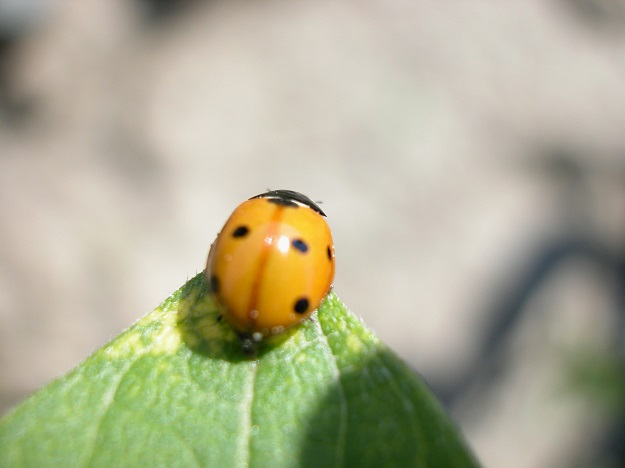
This is the time of year when you should be thinking about readying your greenhouse for beneficial insects. Why? Because, during the coming winter months, when your greenhouse is locked down tight against the cold and snow, they will be your best allies in keeping harmful insects in check, while you continue to grow tomatoes, green peppers, and eggplants, to name a few.
I first became interested in beneficial insects more than 30 years ago, while growing potatoes (outside), and they became infested with potato bugs. It didn’t matter how many of them I picked and carted off to the garbage can, they just kept multiplying. UGH! Then in complete desperation, I called our local County Extension Office and was told to “find some Assassin Bugs, they’ll take care of the pests in your garden.” So, after getting a description of what to look for, I started carefully (they were called Assassin Bugs after all!) scouring neighboring gardens (with permission), Mason jar in hand, on my journey into the wonderful world of beneficial insects.
Then, when I’d found my first few specimens, I released them into my potato patch and watched with rapture as they marched up to those pesky pests, grabbed them with their barbed front legs and proceeded to pierce their prey with the long rostrum, nature so handily equipped them with. But it’s what those good little bugs did next that has forever earned them honorable mention whenever I speak of beneficial insects.
You see, when they had depleted all of the soft-shelled variety, they then moved on to the hard-shelled ones, flipping them over onto their backs, while “surgically” inserting the rostrum in between the hard shell and the “neck” of the potato bug, while filling them with a lethal toxin of enzymes. And though, after the first few days there weren’t as many exoskeletons lying about, I knew they were still on patrol the rest of that growing season, because I would move a leaf here or there, and find an empty exoskeleton of one pest or another that had crossed paths with my little friends the Assassin bugs.
This early experience with beneficial insects was the catalyst which drove me to garden without the use of insecticides, when I began to grow exclusively in my greenhouse, so many years ago. I knew from the beginning that I would always have bad insects in my greenhouse, but I also needed a practical way to control them, and that is when I began to actively welcome beneficial insects into my greenhouse environment and retrained myself to not be too choosy as to what insects crawled or flew across the welcome mat.
The first beneficial insects to take up residence within my greenhouse were orb weaver spiders, called cat faced or barn spiders as they were known to me — because that’s where I always found them, sitting within a huge web strung across the loft door of my grandparents’ barns. And though I don’t go screaming off into the woods whenever I see a spider, they still creep me out whenever I must deal with them in my greenhouse.
Fortunately, over the years, we have both come to an amicable agreement in dealing with each other — in that they can stay in my greenhouse if they don’t hang over the walkway or drop from the ceiling in front of my face. If either “rule” is broken I immediately take my trusty stick that sits by the door and relegate them to the outdoors in warmer months, or the back of the greenhouse. I get that they need to be warm and eat, but I don’t want to undergo a stress test every time I enter the greenhouse either.
However, two years ago (after trying unsuccessfully 10 years running) I got the mother of all beneficials to take up residence over the winter. These dotted wonders were none other than the coveted (for me) C-7 ladybugs. Over the years I had tried everything to attract and keep these dotted wonders happy and productive in my greenhouse. I would carefully transport a few into the greenhouse, taking great care in placing them on tomato leaves, carrots and whatever else might be growing at that time –but to no avail. Then by pure happenstance, it happened.
When we (South Dakota) came out of a drought and started experiencing sub-zero temperatures during the winter months (which is a normal winter for here) I started using bubble wrap on the root crops I plant in the ground to keep them from freezing, and that’s where the eggs were laid and hatched. The bubble wrap also afforded the eggs and larvae protection from the adults, because after all, they are a predator insect.
So, throw open the door and lay down the welcome mat, because beneficial insects are truly a gardener’s best friend — especially when growing during the winter months. Nothing lifts my spirits more during the dark months of winter than watching good insects happily eating their weight in aphids and white flies.
Paula M. Christensen has over 20 years of experience gardening year-round as a hobby greenhouse gardener and incorporates natural and organic feed and insect management practices.
Related Articles & Free Email Newsletter
Are Botanical Insecticides the Best Choice for Your Garden?
How to Identify and Eliminate the Two-Spot Spider Mite Tetranychus urticae




Comment here